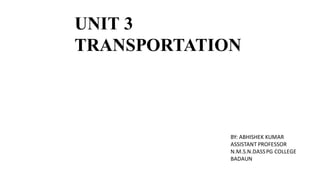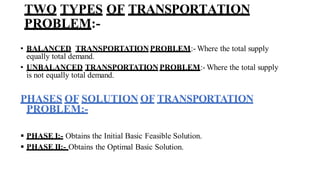The document discusses the transportation problem and methods to solve it. It begins by defining the transportation problem as finding the optimal transportation schedule to minimize transportation costs when distributing a product from multiple sources to multiple destinations. It then describes three methods to obtain an initial basic feasible solution: Northwest Corner Rule, Least Cost Method, and Vogel Approximation Method. The document concludes by explaining the Modi Method, which improves the initial solution by calculating opportunity costs and adjusting cell values along closed paths to find the optimal solution.





































